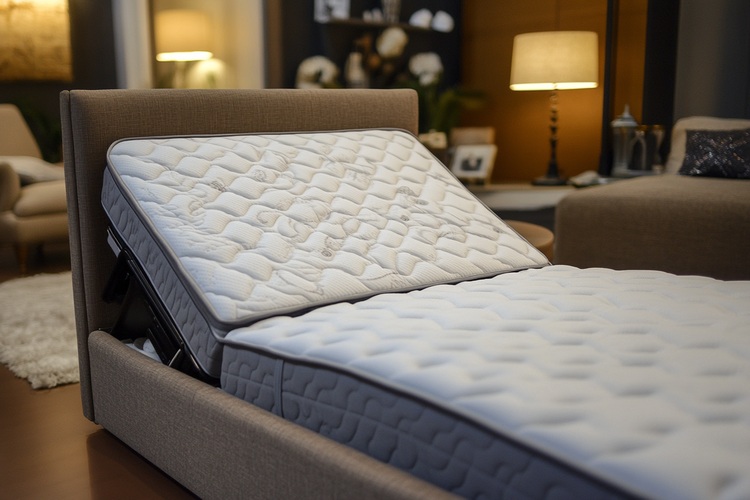Compact storage ideas that reduce nighttime clutter
Nighttime clutter can fragment rest and make bedtime routines longer. This article outlines compact storage strategies and room adjustments that simplify nightly rituals, improve sleep quality, and keep a small bedroom tidy without major renovations.

A tidy sleeping area can shorten your bedtime routine and reduce the mental load that interferes with falling asleep. Compact storage solutions help hide essentials, organize textiles, and keep surfaces clear so lighting and layout work in concert to support restful moments. Below are practical, small-space strategies that focus on function and comfort while respecting sleep-friendly design principles.
This article is for informational purposes only and should not be considered medical advice. Please consult a qualified healthcare professional for personalized guidance and treatment.
How does storage support sleep and declutter?
Well-chosen storage directly reduces visual and physical clutter that can disrupt pre-sleep routines. Use multi-purpose furniture such as ottomans with internal compartments or bed frames with built-in drawers to hold pajamas, bedtime books, and chargers. Wall-mounted shelving with closed bins keeps items off the floor and limits visible objects at night, which can help the brain settle. Keep a small bedside caddy for nightly essentials to prevent them from scattering around the room and adopt a brief nightly tidy-up to preserve the layout.
How can layout and ergonomics reduce nighttime clutter?
An efficient layout minimizes the need to move through the room at night and reduces tripping hazards. Position the mattress and a clear path to the door and light switch, and place frequently used items within arm’s reach to avoid bringing additional objects into the bedroom. Consider ergonomics: a nightstand at mattress height with one drawer prevents items from piling up on the surface. Floating shelves above the nightstand can store reading glasses or a small lamp, keeping surfaces clear while maintaining accessibility and reducing bedtime disruptions.
What role do lighting and circadian rhythms play?
Lighting choices affect both perceived clutter and the body’s circadian response. Use layered lighting with dimmable fixtures or warm-colored bulbs to cue winding down, and avoid bright, blue-rich lights in the hour before sleep. Concealed light sources—like under-shelf LEDs—can illuminate storage zones without creating visual noise. When storage is organized and low-profile, it’s easier to use softer lighting that supports melatonin production and a smoother transition to sleep.
How do textiles and mattress choices affect comfort?
Textiles and the mattress influence how inviting a space feels and how likely you are to maintain calm, clutter-free habits. Store extra bedding in vacuum-seal bags or under-bed boxes to save space and keep textiles fresh. Choose breathable textiles that coordinate with your color scheme to reduce the urge to add decorative items. A mattress that suits your sleep needs reduces nightly adjustments and unnecessary accessory accumulation; when comfort is solved, fewer temporary items like extra pillows or layered toppers tend to clutter the room.
How can acoustics and airflow improve rest?
Acoustics and airflow impact how quickly you fall asleep and how often you get up at night. Sound-absorbing soft furnishings—area rugs, curtains, and upholstered headboards—also double as storage camouflage, letting you tuck bins and boxes into alcoves without amplifying noise. Maintain unobstructed airflow by avoiding densely packed stacks near vents or windows; compact, elevated storage helps maintain circulation. A tidy environment makes it easier to add a small white-noise device or fan without creating visual clutter.
How can color choices help you declutter visually?
Color simplifies perceived clutter: a unified palette reduces visual busyness so fewer storage solutions are needed to calm the eye. Use coordinated storage containers and matching textiles to create a cohesive look that reads as intentional rather than cluttered. Reserve accent colors for a few items to avoid visual distractions at night. Practical declutter strategies—like clear labels, designated zones for nightly items, and consistent textile storage—work better when color and finishes are deliberately restrained.
A compact, well-organized bedroom can support better sleep through thoughtful storage, clear layout, gentle lighting, and attention to acoustics and airflow. Small changes—drawer organizers, under-bed boxes, wall-mounted shelves, and a consistent color scheme—often produce outsized improvements in nightly routines and perceived calm. Prioritize easy-to-reach storage for nightly essentials and tuck away less-used items to keep the sleeping environment focused on rest.





